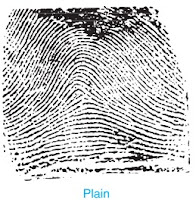Soil Pollution and its Sources and Preventions
Soil is the topmost part of the earth's crust and it's made due to decomposition and disintegration of surface rocks. It might have been formed in one place but it traveled to another due to weather factors like wind, storms, floods, etc.
Soil is essential for the survival of the human race. Soil provides nutrients and minerals to plants which provide us fruits and vegetables. Soil is known as the heart of the biosphere.
But due to anthropogenic activities, soil pollution is occurring in many countries. Soil pollution directly affects the plants and thus affects humans also. Soil pollution have many sources from industries to farms but the real question is how exactly soil pollution affects human life? So let's discuss...
Today, due to an increase in population, the soil is becoming dirty and infertile. Soil gets polluted due to human activities like digging, discharge of toxic chemicals, an increase in the use of vehicles, etc.
Industries use raw material for the production of goods, but only 50% is useful and the rest is thrown into the water or soil. The unused raw material contains tons of harmful compounds like toxic chemicals, glass, plastic, etc which is non-biodegradable i.e they can't be decomposed by soil. Industries like paper mills, mining, cement, glass, petroleum, etc are the main source of soil pollution as well as water pollution.
Following are the agricultural pollutants:
Toxins present in these insecticides are transferred from low tropical levels (Soil) to higher tropical levels (Humans) causing metabolic and physiological disorders. Also, due to excessive use of these insecticides, insects have developed a resistance i.e they no longer kill or stop them instead they directly affect crops and humans.
Thus, inhibiting their growth. Compounds mainly organo-mercury are used as fungicides leaving a high amount of mercury in the soil which is fatal for humans if consumed. In 1972, a large number of people died in Iran due to the consumption of wheat which was treated with methyl mercury fungicide.
Waste like feces, eggshells, dung, etc go deep into the soil and pollute the groundwater. It can also cause viral and bacterial diseases which can be easily transmitted from animals to humans.
Disposing of nuclear waste discharged by a nuclear reactor into the soil is fatal for human life. The dust produced during a nuclear test pollutes the soil. Nuclear power plants after carrying experiments and tests, dump their waste into the soil which emits radioactive rays causing a threat to human life.
Soil is essential for the survival of the human race. Soil provides nutrients and minerals to plants which provide us fruits and vegetables. Soil is known as the heart of the biosphere.
But due to anthropogenic activities, soil pollution is occurring in many countries. Soil pollution directly affects the plants and thus affects humans also. Soil pollution have many sources from industries to farms but the real question is how exactly soil pollution affects human life? So let's discuss...
What is Soil Pollution?
The addition of contaminants like chemicals, pesticides, domestic waste, etc into the soil, is called soil pollution.Today, due to an increase in population, the soil is becoming dirty and infertile. Soil gets polluted due to human activities like digging, discharge of toxic chemicals, an increase in the use of vehicles, etc.
Sources of Soil Pollution
1. Industrial Waste
Industries use raw material for the production of goods, but only 50% is useful and the rest is thrown into the water or soil. The unused raw material contains tons of harmful compounds like toxic chemicals, glass, plastic, etc which is non-biodegradable i.e they can't be decomposed by soil. Industries like paper mills, mining, cement, glass, petroleum, etc are the main source of soil pollution as well as water pollution.
2. Urban Waste
Urban and domestic waste like garbage, food, paper, plastic, polythene, etc contributes to soil pollution. These wastes emit greenhouse gases like methane, carbon dioxide, etc which leads to the greenhouse effect and thus global warming.3. Agricultural Pollutants
Though fertilizers, pesticides, soil conditioners, etc that are considered as agricultural pollutants are helpful to increase the yield of crops. We can't neglect the fact that they are harmful to the soil.Following are the agricultural pollutants:
(i) Fertilizers
Fertilizers contain nitrates and phosphates which are used to increase the production of crops. If these fertilizers are used in excess amount then it can have a hazardous effect, not only for soil but also for humans and animals.(ii) Pesticides
Compounds that are used to kill or stop the growth of unwanted organisms are known as pesticides. These are harmful to the soil as well as humans due to their toxic nature. These are further classified into three types as given below:(a) Insecticides
Compounds that are used to kill or stop the growth of insects that destroy crops are known as insecticides. Over a while, insecticides are evolved from chlorinated hydrocarbons ( DDT, BHC, etc) to new organophosphates and carbamates. Insecticides are generally water-insoluble and stay in the soil for a long time causing contamination of crops like radish, carrot, etc.Toxins present in these insecticides are transferred from low tropical levels (Soil) to higher tropical levels (Humans) causing metabolic and physiological disorders. Also, due to excessive use of these insecticides, insects have developed a resistance i.e they no longer kill or stop them instead they directly affect crops and humans.
(b) Herbicides
Compounds that are used to stop the growth of weeds are known as herbicides. Earlier herbicides like sodium chlorate and sodium arsenite were used but these compounds being toxic for soil and animals are replaced by new organic herbicides like triazines.(c) Fungicides
Compounds that are used to kill or stop the growth of fungi are known as fungicides. As we know that fungi do not have chlorophyll, therefore they are dependent on other plants and animals for the synthesis of food.Thus, inhibiting their growth. Compounds mainly organo-mercury are used as fungicides leaving a high amount of mercury in the soil which is fatal for humans if consumed. In 1972, a large number of people died in Iran due to the consumption of wheat which was treated with methyl mercury fungicide.
(iii) Soil Conditioners
These are metals used to protect the fertility of the soil. Some common soil conditioners are cobalt, cadmium, lead, mercury, etc. They are toxic and can be hazardous if enters the food chain.(iv) Farm Wastes
It is one of the biggest contributors to soil pollution. In rural area diaries, poultries and piggery farms are the main source of soil pollution.Waste like feces, eggshells, dung, etc go deep into the soil and pollute the groundwater. It can also cause viral and bacterial diseases which can be easily transmitted from animals to humans.
4. Radioactive Pollutants
Disposing of nuclear waste discharged by a nuclear reactor into the soil is fatal for human life. The dust produced during a nuclear test pollutes the soil. Nuclear power plants after carrying experiments and tests, dump their waste into the soil which emits radioactive rays causing a threat to human life.
Steps to Prevent Soil Pollution
Following are the basic steps to stop soil pollution:- Reduce the usage of non-biodegradable products like plastic, polythene, etc.
- Minimize the usage of pesticides, instead use manure.
- Always discharge domestic waste into sewerage instead of open.
- Industrial waste should be treated before its discharge.
- Plant some trees in your local area.
- Never throw dirty water on the soil instead discharge it into the sewerage systems.







